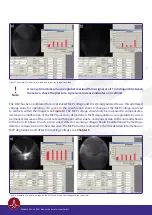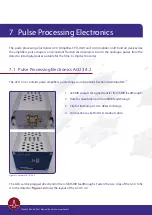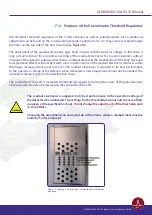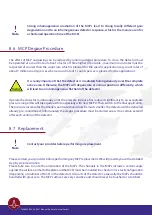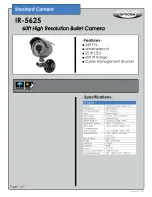
32
The effect of MCP outgassing can be reduced by running a degas procedure. To do so the detector must
be operated at a count rate of about a factor of three higher (if possible - maximum count rates must be
respected of course) than the count rate which is planned for the specific application (e.g. count rates of
about 3 million counts per sec when a count rate of 1 counts per sec is planned for the application).
It is really important that the detector is irradiated homogeneously over the complete
active area. Otherwise the MCPs will degenerate at various positions differently, which
will lead to an inhomogeneous flat field of the detector.
Operate the detector continuously until the pressure increase has reduced significantly to an acceptable
pressure range (this will take quite a while, especially with new MCPs). Then switch to the final application.
The pressure increase for the smaller count rate should now be much smaller. The detector will be delivered
already pre-conditioned. Unfortunately the degas procedure must be started anew (to a certain extend)
after each venting of the detector.
Please contact your provider before performing any MCP replacement. We will provide you with a detailed
step by step description.
Please take care to note the orientation of the MCPs. The channels in the MCPs include a certain angle
against the surface normal to the plate and the MCPs must be mounted in a chevron or z-stack configuration
(depending on number of MCPs in the detector). All parts of the detector, especially the MCPs should be
handled with great care. The MCP surfaces are very sensitive and should never be touched or scratched.
Strong inhomogeneous irradiation of the MCPs lead to strong locally different gain
degradation and to an inhomogeneous detector response, which is the main reason for
a shortened operation time of the MCPs.
Note
8.6 MCP Degase Procedure
8.7 Replacement
Contact your provider before performing a replacement.
Note
DLD8080 R4.30 & R4.31 Manual | Surface Concept GmbH





